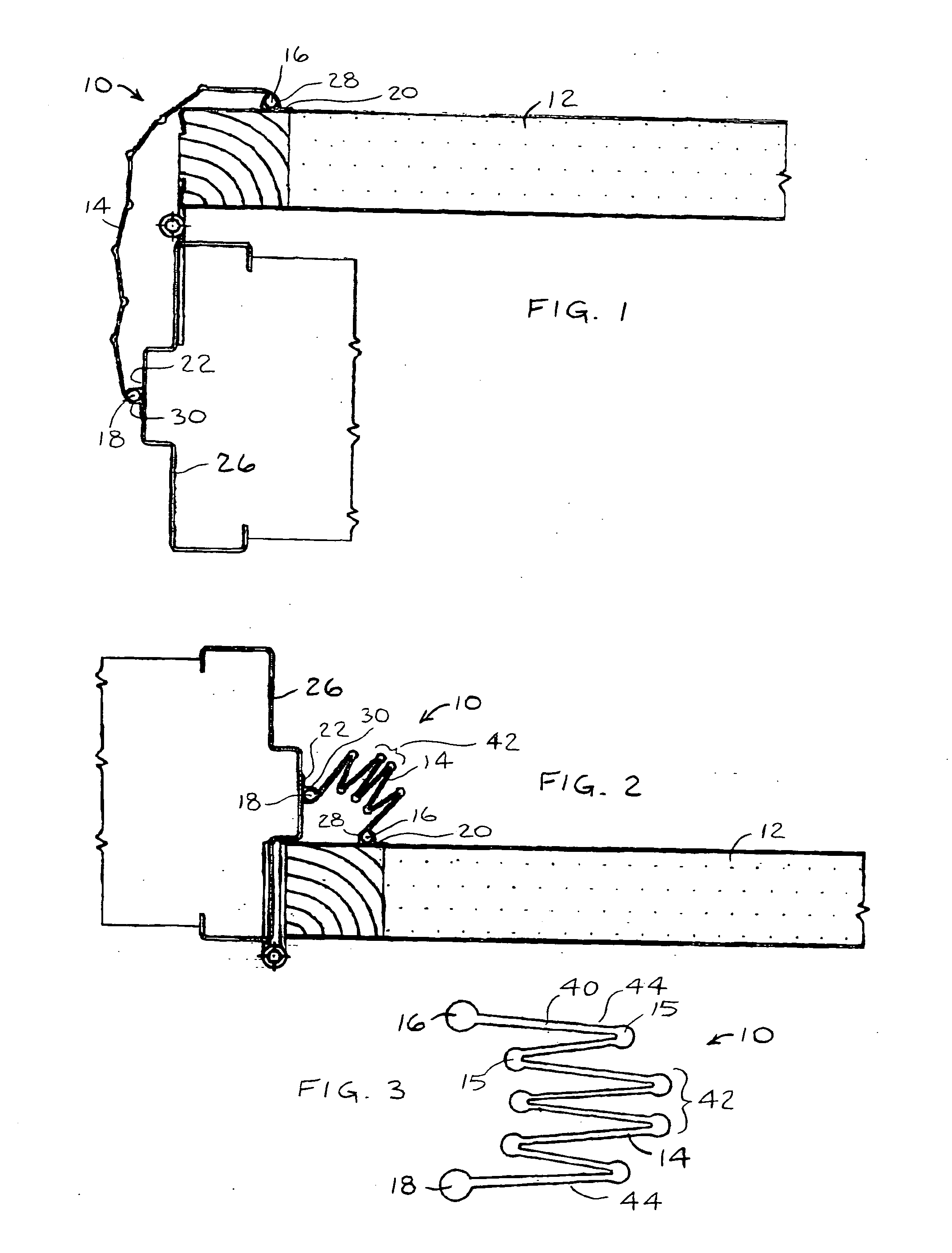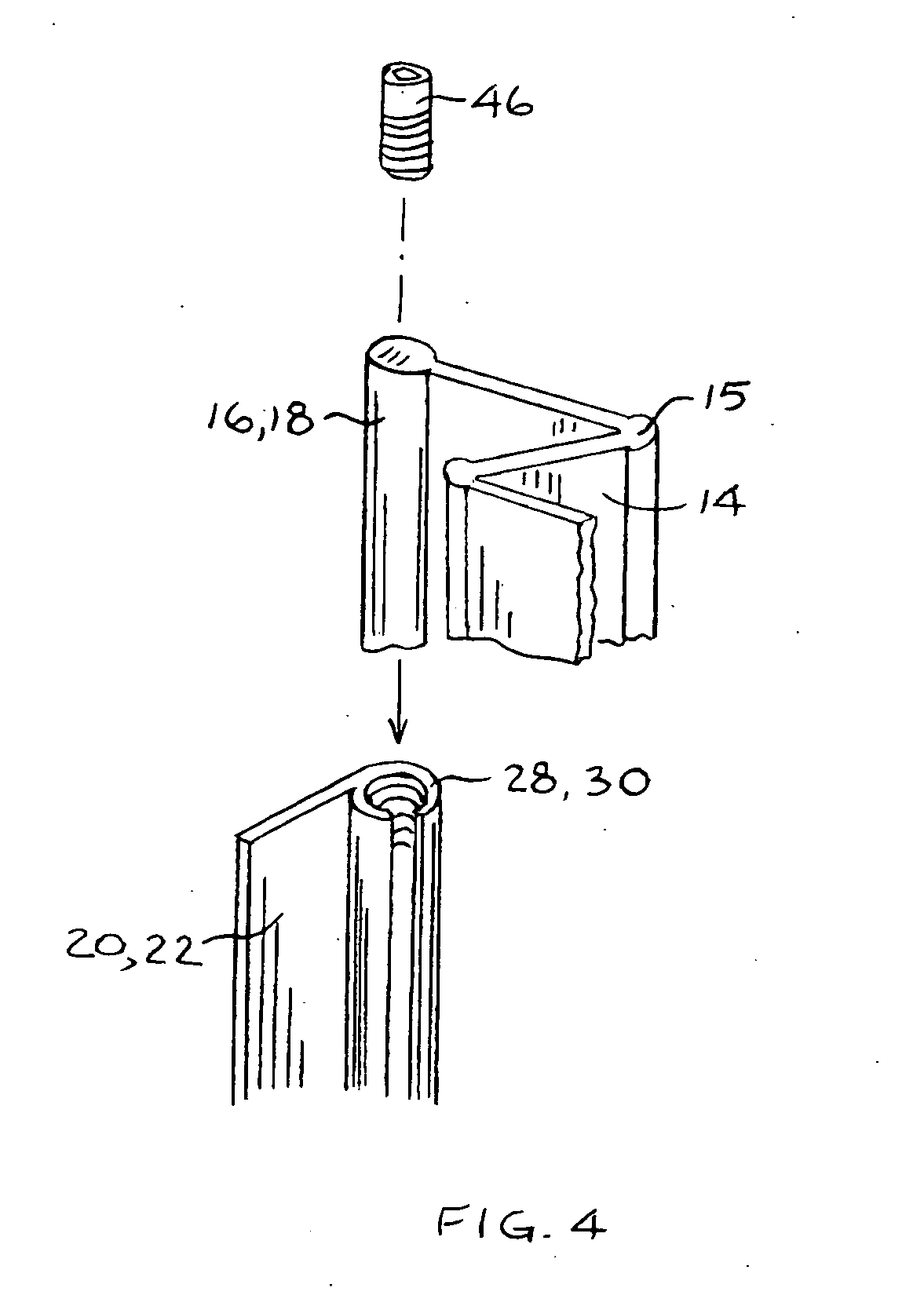Finger guard
a technology of finger guards and hinges, which is applied in the direction of hinges, door/window fittings, building components, etc., can solve the problems of door jamb damage, gap formed between the edge of the door and the door jamb, crush or break,
- Summary
- Abstract
- Description
- Claims
- Application Information
AI Technical Summary
Benefits of technology
Problems solved by technology
Method used
Image
Examples
Embodiment Construction
[0014] Reference is now made to FIGS. 1 and 3, which illustrate a finger guard 10 for a door 12, constructed and operative in accordance with a preferred embodiment of the present invention.
[0015] The finger guard 10 may include a flexible member 14 having two opposite edge portions 16 and 18, respectively. Flexible member 14 may be constructed of an elastomeric material, such as but not limited to, rubber, neoprene, silicone rubber and the like, or a flexible metal sheet, for example.
[0016] Flexible member 14 may include a plurality of folds 40 with arcuate knuckles 15 at the joints of the folds. The folds 40 resemble a bellows or accordion, for example. The central folds (i.e., at the center of the finger guard, designated by reference numeral 42) protrude farther out and away from a hinge side 33 of the door 12 than the side folds (i.e., at the sides of the finger guard, designated by reference numeral 44). As the door 12 closes, the central folds 42 of the flexible member 14 t...
PUM
 Login to View More
Login to View More Abstract
Description
Claims
Application Information
 Login to View More
Login to View More - R&D
- Intellectual Property
- Life Sciences
- Materials
- Tech Scout
- Unparalleled Data Quality
- Higher Quality Content
- 60% Fewer Hallucinations
Browse by: Latest US Patents, China's latest patents, Technical Efficacy Thesaurus, Application Domain, Technology Topic, Popular Technical Reports.
© 2025 PatSnap. All rights reserved.Legal|Privacy policy|Modern Slavery Act Transparency Statement|Sitemap|About US| Contact US: help@patsnap.com



